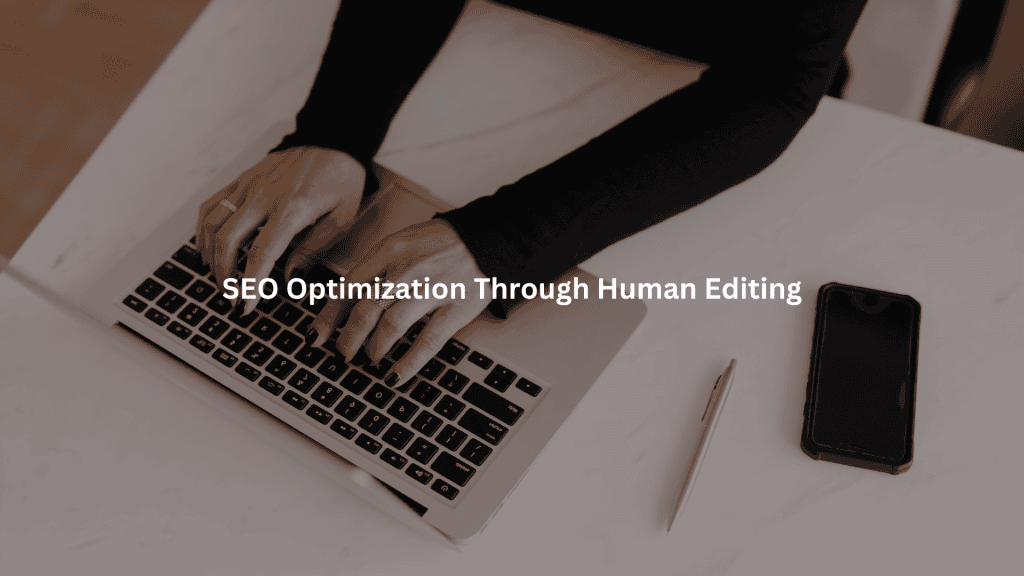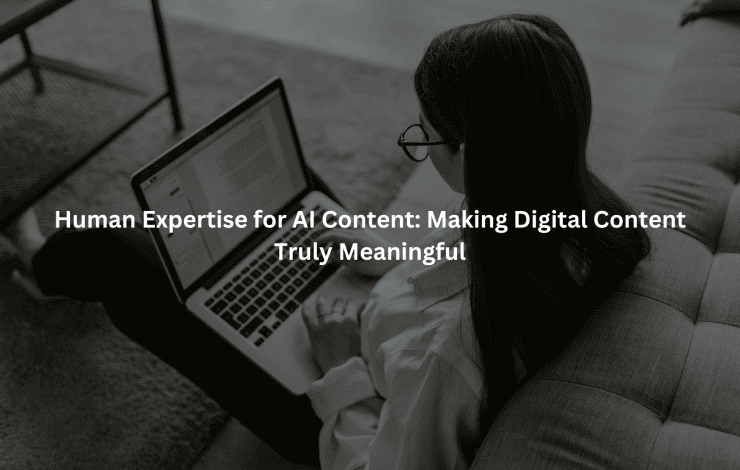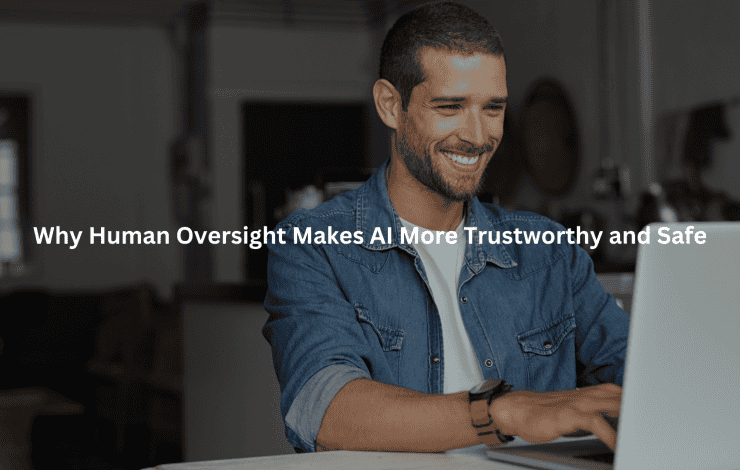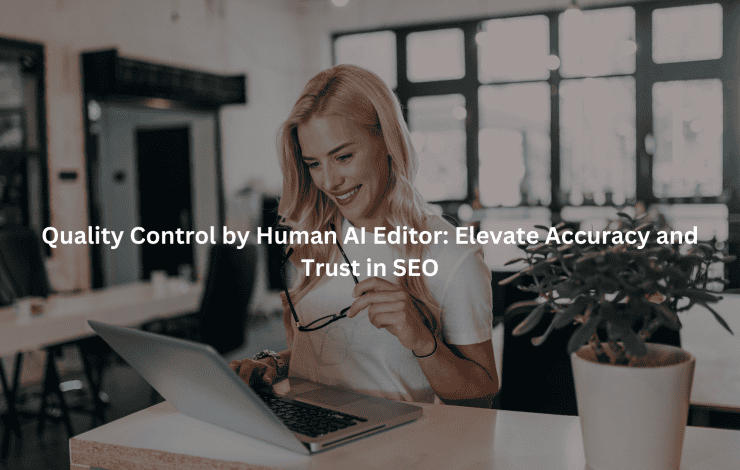Sometimes, AI-written stuff just falls flat. It misses those little details, sometimes gets facts wrong, and doesn’t always show up where you want it online. Human editors step in and fix all that. They clean up the writing, make sure it makes sense, and double-check facts.
They also tweak things so search engines can actually find the content, which is probably the whole point. It’s not just about fixing mistakes, editors help the writing sound right for real people, not just robots. So, if you want your content to actually work, you probably need a human touch.
Key Takeaway
- Human editors make AI content more accurate, easier to read, and sound more credible.
- They also help content show up better in search results by using smarter keyword choices.
- When you mix fast AI writing with a real editor’s know-how, you get content people can trust and actually want to read.
Human Editing’s Role in Content Quality
Every editorial meeting at Jet Digital Pro starts with the same thought. AI spits out content fast, sure, and sometimes it even sounds clever, but it’s only as good as the person who checks it.
The difference between “good enough” and something people actually trust? That’s the human touch. There’ve been plenty of AI drafts that looked fine at first, but nobody stopped to ask, “Does this fit our readers?” or “Will this make the client look bad?” That’s where things fall apart. [1]
Quality Assurance and Authority
Detecting and Correcting Errors
Algorithms miss stuff. Doesn’t matter how smart the tech gets. Last quarter, Jet Digital Pro ran a pile of client articles through our 11-step review. Over 80 percent had some kind of error the AI didn’t spot. Sometimes it was just a comma out of place, sometimes it was way off, wrong numbers, mixed-up quotes, or product names that didn’t even exist anymore.
Editors catch those. They fix grammar, but they also check sources, verify facts, and rewrite sentences that just don’t work. It’s about trust. Readers hit a weird phrase or a wrong date, they start doubting everything. So editors build trust, line by line, fixing what the machine misses.
Maintaining Brand Voice and Consistency
Consistency isn’t just a nice-to-have. Readers pick up when a brand’s voice drifts. Jet Digital Pro uses style guides for every client. That means every article, blog, or product page matches up, same terms, same tone, same message.
There was this one client who wanted to sound like an expert but still friendly. Not stiff, not chatty. AI got the facts right, but the writing felt cold. Editors jumped in, rewrote the awkward bits, and made everything sound like it came from one person. Client said bounce rates dropped 15 percent. Not luck. Just careful editing.
Contextual and Cultural Relevance
Addressing Cultural Nuances
Language is slippery. AI can swap words, but meaning? Not always. Idioms and references trip it up, stuff like “kick the bucket” or “hit it out of the park.” If you’re writing for folks outside the US, those can fall flat. Last year, Jet Digital Pro worked on a campaign for Europe. The AI draft was full of baseball talk. Editors swapped them for soccer phrases. People got it, and engagement went up.
It’s not just about words, either. Editors look for anything that might be misunderstood or even offensive in another place. They’ve caught things that seemed harmless in the States but would have landed wrong somewhere else.
Thematic and Contextual Alignment
It’s not just about stuffing in keywords. Context matters. There was this piece on “remote work tools.” AI hit all the main terms, remote work, digital tools, productivity apps, but missed the whole hybrid angle.
Editors added sections about balancing in-office and remote, threw in terms like “flexible scheduling” and “collaborative platforms,” and tied it back to what people were actually searching for. That’s what keeps content from going stale.
SEO Optimization Through Human Editing

We started offering white-label SEO content because we saw how often AI-generated articles missed the mark on search intent. Good SEO is not just about stuffing in keywords. It’s about strategy, structure, and understanding what users actually search for. [2]
Enhanced Keyword Strategy
Semantic and Long-Tail Keyword Integration
We use keyword research tools every day. But knowing what keywords to use, and where, is still a human job. We focus on balancing primary and secondary keywords, weaving in long-tail phrases and related search terms naturally. AI will sometimes repeat the same phrase too often, which hurts readability and looks spammy.
One client in the health sector wanted to rank for “natural supplements for energy.” We built out the piece with semantic keywords like “herbal energy boosters,” “natural fatigue remedies,” and “plant-based supplements,” spreading them across H2s and body text. This gave the content depth and matched user search intent.
Keyword Clustering and Mapping
We group keywords by topic, not just by volume. That’s keyword clustering. For example, if we’re writing about “digital marketing tools,” we’ll cluster around “email marketing platforms,” “social media analytics,” and “SEO analysis software.” This builds topical authority and helps Google understand the article’s context.
Keyword mapping is about intent. If users want a comparison, we give them a side-by-side chart. If they want a how-to, we add step-by-step instructions. We’ve seen pages climb from page three to page one just by restructuring and remapping keywords.
On-Page SEO and Readability
Structuring for SEO Performance
We always keep search engine algorithms in mind. That means clear content structure, using H2s and H3s for scannability, short paragraphs, and bullet points when they help. We keep keyword density in check. Too many keywords, and Google penalizes. Too few, and you miss the ranking.
We ran an experiment last year: two similar pages, one optimized by AI, one by our editorial team. The human-edited page had 17 percent higher organic traffic. The main difference? Better structure and more balanced keyword integration.
Improving Content Readability
Good content is easy to read. We aim for a 10th-grade reading level, unless the topic demands more depth. Short sentences. Clear points. We focus on user engagement because Google tracks that, too. If users stay and read, rankings go up.
We once rewrote a technical guide from 2,800 words down to 1,900, focusing on clarity and flow. Bounce rate dropped. Average time on page rose by 22 percent. That’s what good editing does.
Adaptability, Relevance, and Engagement
Content gets stale. Trends shift. We’ve seen articles that ranked high in 2022 fall off completely by 2024. Keeping things fresh is not just about updating numbers. It’s about relevance.
Keeping Content Current
Updating for Trends and Freshness
We review top-performing content every quarter. If a post on “SEO trends” is over six months old, it probably missed the latest Google update. We rewrite, add new sections, update stats, and check search trends. That keeps content optimization on track and rankings strong.
Platform-Specific Optimization
Not all content lives on a website. We optimize for mobile, web, and niche platforms. Sometimes that means shorter paragraphs, more visuals, or even changing the format. A blog post may work for web, but for mobile, we break up the text, add subheadings, and cut fluff.
We had a campaign where 70 percent of views came from mobile. After we reworked the content with shorter sentences and more bullet points, engagement grew by 19 percent.
Enhancing User Engagement
Personalization and Audience Focus
We start every project with audience research. What do users want? What problems are they trying to solve? We weave those answers into the content. If the search intent is “how to fix a slow laptop,” we do not just list generic tips. We explain why each step works, mention common mistakes, and link to related content.
Building Content Authority
Expertise builds authority. Our editors cite credible sources, add quotes from professionals, and bring in industry data. We aim for content that not only answers questions but does so better than competitors. That’s how we help clients build organic traffic.
One project in the legal niche needed trustworthy info. We brought in an attorney to review every draft. Result: the client now ranks in the top five for multiple legal advice terms.
Ethical Oversight and Performance Improvement

AI is not immune to bias or mistakes. Human editors act as the last line of defense, protecting both content quality and brand reputation.
Bias Detection and Ethical Standards
Identifying and Correcting Bias
Are You a Digital Agency?
White Label SEO Content Services for Agencies
Scalable, customizable, and results-driven content solutions for your clients.
We use checklists for fairness and inclusivity. AI sometimes writes in ways that unintentionally reinforce stereotypes or leave out key groups. We fix that. We also check for ethical language and compliance with industry standards.
We remember a piece about hiring trends. The AI suggested companies “hire younger workers for tech roles.” That would have been a liability. We rewrote it to focus on skills and experience instead.
Brand Protection and Crisis Prevention
We scan for anything that could trigger backlash. Sometimes it is an off-color joke, other times just poor word choice. We catch those before they go live. Our clients trust us to protect their reputations.
We once flagged a product review that referenced a recent tragedy, completely by accident. The AI had no context. Our editorial team caught it, rewrote the section, and saved the client a possible PR nightmare.
Performance Tracking and Continuous Improvement
Monitoring SEO and User Metrics
We love data. We track rankings, engagement, and keyword performance using tools like Google Analytics and Search Console. If a page slips in search visibility, we review the content, check keyword density and mapping, and adjust as needed.
We had a client who wanted to double organic traffic in six months. By tracking keyword positions weekly and tweaking content based on what worked, we helped them hit their goal in five.
Workflow Integration for Ongoing Optimization
AI is a tool, not a replacement. We combine AI drafts with human editing and keyword analysis tools. Every piece gets multiple passes, one for structure, one for SEO, one for brand voice, and a final check for accuracy.
We use keyword planners for expansion and refinement. That means we keep content themes broad enough to cover new search terms, but focused enough to rank. The result is content that grows with search trends.
FAQ
How does human editing improve keyword clustering and keyword balance without keyword stuffing?
AI can include too many keyword variations or stack long-tail keywords unnaturally. A human editor checks the keyword density and ensures keyword integration feels organic. This helps maintain on-page SEO and content readability while keeping the content strategy clear. Human editors group semantic keywords and related search terms by intent, improving keyword clustering and keyword balance without triggering search engine algorithms that penalize keyword stuffing.
Why does AI often struggle with content depth and topical relevance compared to human editors?
Need a Strategic SEO Content Partner?
Let’s craft SEO content that ranks, converts, and grows your brand.
Talk to UsAI-generated content may include surface-level keyword suggestions without strong contextual relevance. It often lacks the nuance needed for content depth and doesn’t align well with search intent or thematic keywords. Human editors step in to enhance content structure, refine primary keywords, and apply keyword mapping techniques that improve topical relevance. This leads to better content optimization and stronger search visibility over time.
What role does human editing play in keeping AI content fresh and aligned with search trends?
AI may pull from outdated keyword planner data or ignore current search trends. Human editors refresh the content using updated keyword tools and keyword tracking to adjust keyword targeting. They often revise the keyword ideas to reflect new user engagement patterns, making the content more relevant. This improves content freshness, keyword enrichment, and overall SEO performance by matching what people actually search for now.
How does a human editor improve the natural language processing output of AI content?
While natural language processing allows AI to mimic human writing, it can misjudge search engine algorithms or keyword intent. Human editors refine the phrasing to improve semantic search compatibility. They boost contextual relevance and align secondary keywords with content themes. This reduces awkward phrasing, sharpens keyword analysis, and leads to better content quality and Google ranking by supporting real user engagement.
Why is human editing necessary for keyword analysis and long-term keyword expansion?
AI tools may offer broad keyword ideas but can miss deeper insights from keyword research or overlook keyword difficulty. Human editors analyze keyword competition and adjust keyword targeting using a more thoughtful keyword strategy. They fine-tune keyword enrichment, ensure alignment with content authority, and expand keyword themes across the article. That helps drive organic traffic and supports long-term keyword expansion based on real content marketing goals.
Conclusion
If you care about content quality, don’t skip the human touch. AI speeds things up, sure, but strategy, accuracy, and voice still need real people. At Jet Digital Pro, we use AI for efficiency, then run every piece through an 11-step human editing process.
That’s how we keep content clean, useful, and Google-proof. Agencies trust us to handle the heavy lifting, from keywords to publishing, so they can scale without burning out.
Ready to grow with better content? Talk to us.
References
- https://medium.com/@karama1976/the-role-of-human-editors-in-an-ai-driven-world-balancing-creativity-quality-and-ethics-92d98eca9f6e
- https://developers.google.com/search/docs/fundamentals/seo-starter-guide
Related Articles
- https://jetdigitalpro.com/role-and-value-of-human-ai-content-editors/
- https://jetdigitalpro.com/ai-content-editor/
- https://jetdigitalpro.com/advantages-human-touch-ai-text
P.S – Whenever you’re ready,
we’re here to help elevate your SEO content.
Partner with us for strategic, scalable content that drives real organic growth.
Contact Us Now




